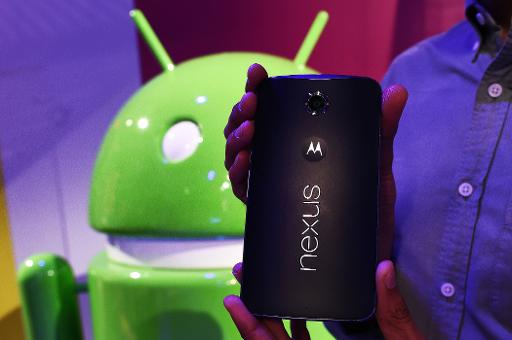Google’s dominance over the smartphone landscape appears to be topping out, but the company is gaining more control over the devices that run its software.
The Android mobile operating system ran 84% of smartphones shipped globally in the third quarter, according to research firm Strategy Analytics, down slightly from 85% in the second quarter.
“Android’s global smartphone market share is peaking,” said Strategy Analytics analyst Neil Mawston. “Unless there is an unlikely collapse in rival Apple iPhone volumes in the future, Android is probably never going to go much above the 85% global market share ceiling.”
Market share for Apple’s iOS mobile operating system was 12% in the third quarter. Microsoft ‘s Windows Phone captured 3% share and BlackBerry devices 1%.

Even if Android’s market share doesn’t go any higher, there is still good news for Google.
For starters, the market overall is still growing. Strategy Analytics forecasts 12% growth in smartphone shipments in 2015.
Second, Google appears to be turning the tide on the growth of so-called Android forks – versions of the mobile operating software that are developed independently and don’t come with Google’s lucrative mobile apps.
As a percentage of total Android shipments, forks made up 37% in the third quarter, down slightly from 39% in the second quarter.
Google makes no money on Android itself, since it gives away the operating system for free to device makers. It profits from revenue generated by advertisements that appear in apps like Google Search, Google Maps and YouTube, as well as a cut of sales of apps, files, subscriptions, and the like sold through the Google Play Store.
Mr. Mawston of Strategy Analytics chalks up the decline in Android forks to a “maturing” China smartphone market, where most forked Android devices are sold. In addition, Google is asserting control over its operating software through its newly launched Android One program. That program is designed to provide cheap, reliable smartphones to consumers in emerging markets such as India. Those phones come with Google’s various services installed.
Meantime, Samsung’s dominance over other Android handset makers is waning, reducing the threat that the Korean hardware maker could wrest more control from Google. In the third quarter of this year, 25% of smartphones shipped were Samsung devices. That figure cratered from the year prior, when it stood at 35%.
Samsung ships mostly Android devices and long has been dominant among Android vendors thanks in part to big commissions it pays to smartphone distributors, particularly in emerging markets. That gives them an incentive to push its devices over rivals.
Yet Samsung is losing out to upstarts like China’s Xiaomi, which are undercutting the Korean giant on price. Samsung sells its smartphones at a premium and captures bigger profit margins on each device sold, while Xiaomi prices its devices closer to the cost of making them and profits instead on the sale of accessories and software add-ons.
In the previous two years, as Samsung’s market share peaked, it tried to assert more independence from Google by distributing more of its own services on its Android devices while simultaneously downplaying the fact that Google’s software powered them. That sparked concerns inside Google that it could lose some control over the operating system, according to people familiar with the company’s internal deliberations.
Earlier this year, Samsung and Google reached a detente of sorts, when they agreed to a broad patent cross-licensing deal.
The biggest challenge to Google’s mobile dominance could come from regulators. European Union antitrust authorities are poised to unleash a formal investigation into Android in the wake of concerns that Google shuts out rivals in promoting services such as Google Maps.
The Wall Street Journal first reported the news of Google’s secret agreements with handset makers requiring them to feature those services prominently if they want access to the services in the first place.